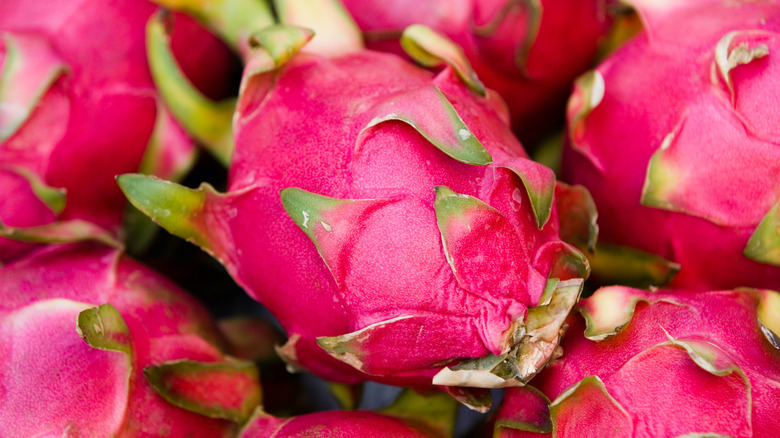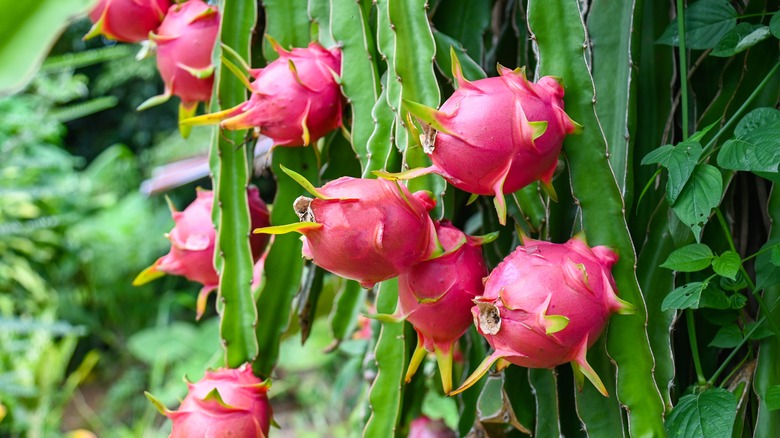The Type Of Plant Dragon Fruit Grows On
Despite its mythical name, the almighty dragon fruit is very real — and to some, very delicious. Perhaps best recognized by its bright reddish-pink, "spiky" rind and mellow flesh abundant with tiny black seeds, dragon fruit, also known as strawberry pear or pitaya (per Cleveland Clinic), is an icon of the culinary world. As an increasingly popular ingredient in smoothies, salads, juices, and cocktails the uniquely gorgeous tropical provision adds a pop of color and juicy flavor to anything it touches. Some people even love to enjoy it by itself, scooping out the flesh with a melon baller or spoon as a healthy snack.
Much to eaters' delight, dragon fruit offers plenty of nutritional benefits. For instance, it's rich in antioxidants, which help fight diseases and inflammation, and is also packed with fiber, iron, magnesium, and vitamins C and E, according to Healthline. So, what exactly makes dragon fruit so special?
Dragon fruit is a member of the cactus family
Dragon fruit is consumed around the world as an ingredient in a variety of dishes and beverages. According to the Blue Book Services, dragon fruit is native to Mexico, Central America, and South America. And like its cousins, the prickly pear and the Peruvian apple, dragon fruit are edible cacti. Its taste can be described as a combination of pear and kiwi, per the Food Network.
The good news is, like many fruits and vegetables, dragon fruit can be grown at home — that is, if you live in the right climate and have enough room. The Spruce explains that the vivid pink cactus plant grows rapidly, frequently reaching heights upwards of 20 feet tall, which makes sense, considering its showstopper status. Like most cacti, dragon fruit generally thrives in warm, sunny regions and requires plenty of space for cultivation. Unlike the giant, flying, fire-breathing reptile we know from fairytales, the dragon fruit is nothing to be afraid of.

